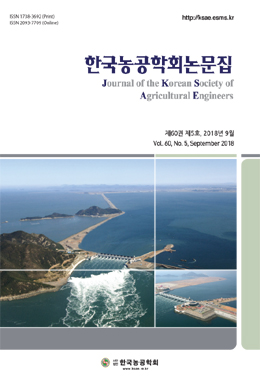The objective of this study is to identify the priority area where the nonpoint source pollution (NPS) management is required and to set up the load reduction goals for the identified priority area. In this study, the load duration curve (LDC) was first developed using the flow and water quality data observed at 286 monitoring stations. Based on the developed LDC, the priority area for the NPS pollution management was determined using a three-step method. The 24 watersheds were finally identified as the priority areas for the NPS pollution management. The water quality parameters of concern in the priority areas were the total phosphorus or chemical oxygen demand. The load reduction goals, which were calculated as the percent reduction from current loading levels needed to meet target water quality, ranged from 67.9% to 97.2% during high flows and from 40.3% to 69.5% during moist conditions, respectively. The results from this study will help to identify critical watersheds for NPS program planning purposes. In addition, the process used in this study can be effectively applied to identify the pollutant of concern as well as the load reduction target.


